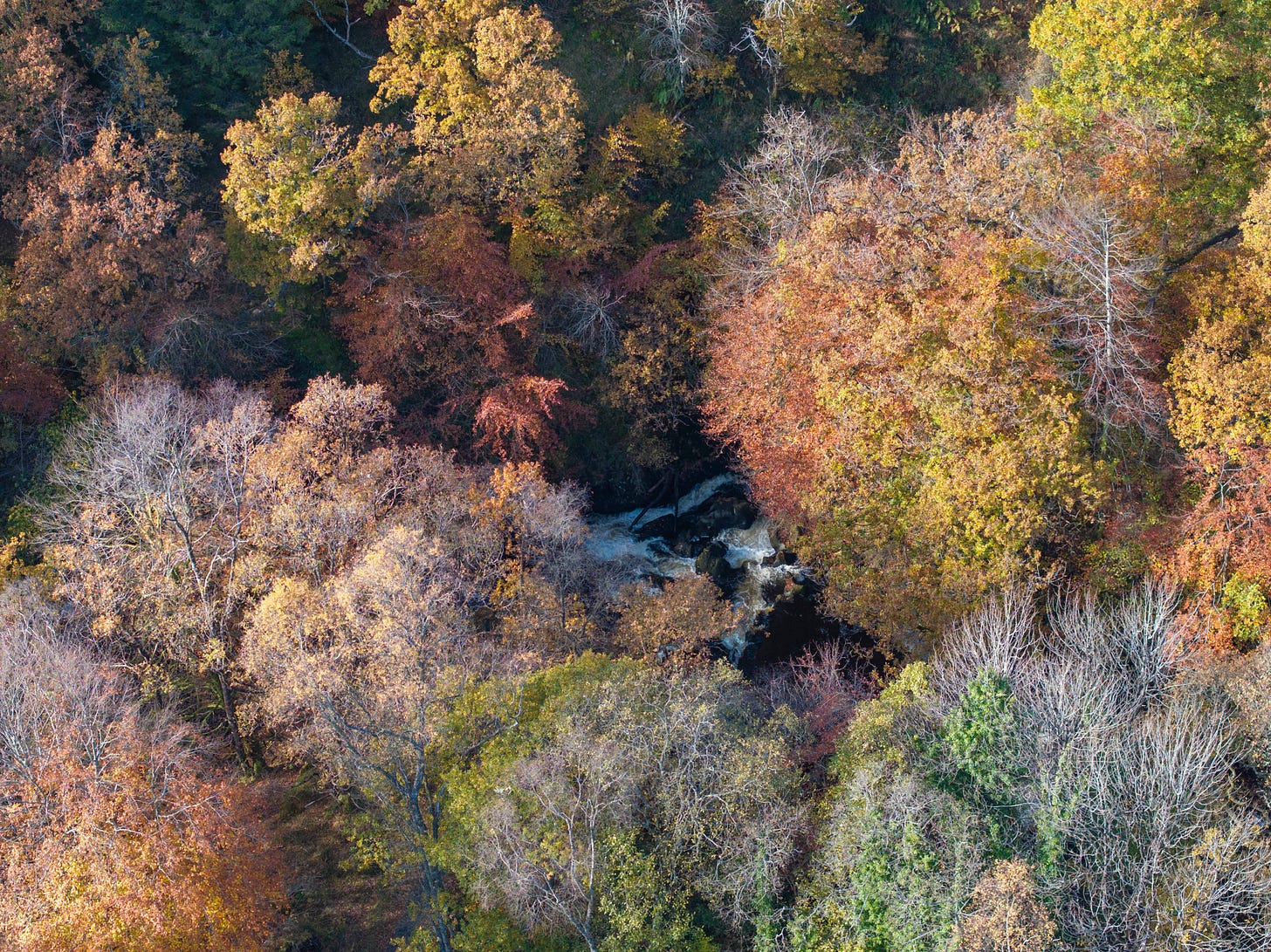5. Romance
The Wild, Beating Heart of Scotland
Fabricated Land is an ongoing body of work composed of photoweaves of abstract aerial imagery. Each weave tells hidden stories of the past’s influence on the present.
A new weave, inspired by this week’s story, can be found at the end of this post.
Glasgow’s gritty streets are washed clean by sublime waters. Irradiated by rainbows, percolated through faultlines and bubbling up from sublime springs, they originate from the Trossachs, the same spot to which Romantic and Pre-Raphaelite poets and painters made pilgrimage, a wild sanctuary in the industrial age of the 1800s.
In 1859, Nature was dammed at Loch Katrine, and, through the wonder of Victorian pipes and gravity, water was brought 34 miles to Glasgow. It has filled ships’ tanks, brewed tea and rinsed urinals every day since.
In 1853, a few years before the construction of the dam, famed art critic John Ruskin, drawn like many others by the work of Walter Scott, came to the region for inspiration, along with his wife Effie and his friend and fellow painter John Everett Millais, soon after painting his famous Ophelia. Loch Katrine had inspired Scott’s narrative poem The Lady of the Lake (1810), while his epic poem ‘Glenfinlas’, published in 1800, was set just over a mountain ridge from the loch. Glen Finglas, as is called today, was equally pure and untrammelled.

Above the Fog
Beauty blazes from every branch in Glen Finglas. The waters rumble and shush you into reverent awe.
You can stand at the exact spot where Millais set his famed portrait of Ruskin amid the River Turk – and recognise the rocks Millais painted with Pre-Raphaelite realism (“The Truth of Nature is a part of the Truth of God” said Ruskin). Everything about the composition, including Ruskin’s demi-lunge, appears to reference Caspar David Friedrich’s renowned Wanderer Above a Sea of Fog (1818), one of the defining images of the Romantic era. In Millais’s painting, Ruskin is the wanderer, this time turning toward the viewer, and standing high above the mist-like water.

Romance is Dead
This painting may come after the official end of the Romantic era (1800–1850), but the artist and subject grew in that seedbed and enriched its soil. An odd backstory reveals that being immersed in nature does not guard you against the unloveliness of man writ large in cities. As it happens, Glen Finglas would mark a personal watershed for Ruskin.
While in the Trossachs, possibly even by the mighty rushing stream, his wife Effie and his friend Millais fell in love, perhaps by design. A year later, the Ruskins’ marriage – apparently never consummated, even after six years – was annulled. It was the non-sex scandal of the decade, or perhaps the century. A year after that, Millais and Effie were married, and they went on to have eight children.
Visitors to the glen requiring more heartbreak need only continue upstream to the Ruskin Viewpoint. Here stands one of the greatest views in all Scotland of a 1960s concrete dam. Framed by handrails, the grey wall looms high above. The River Turk bursts forth wildly from the outflow pipes, rushing east to the Forth and beyond to the North Sea, while the tamed waters are piped west to Glasgow.
Love in the Fall
Weaves bring together dichotomies of land; romance and reality, highland and lowland, man and nature. Sometimes I create a work that draws on the visible textures– in this case the straight shadows of the trees, like tartan’s grid. I will be returning here in summer to show the passing of seasons.
Breakup, Glen Finglas (Split), 2025
Archival photographic prints, hand-cut and woven
16.5 x 21.5 inches
A collector recently requested a triptych – the small study weave below flanked by its two source images at the same size. I liked the idea and hope to share the finished result in a couple of weeks once it returns from the framers. If owning one of my study weaves or a triptych appeals to you, please contact me for more information.











A fascinating article Kieran and I love the weave images. They must take ages to construct but the result is quite beautiful.
Interesting read, Kieran, although I usually shudder at Ruskin's name having had to read his 'The Seven Lamps of Architecture'. Apparently, he later called it a wretched rant which has amused me somewhat this morning when I read that. I'll look forward to seeing the triptych.